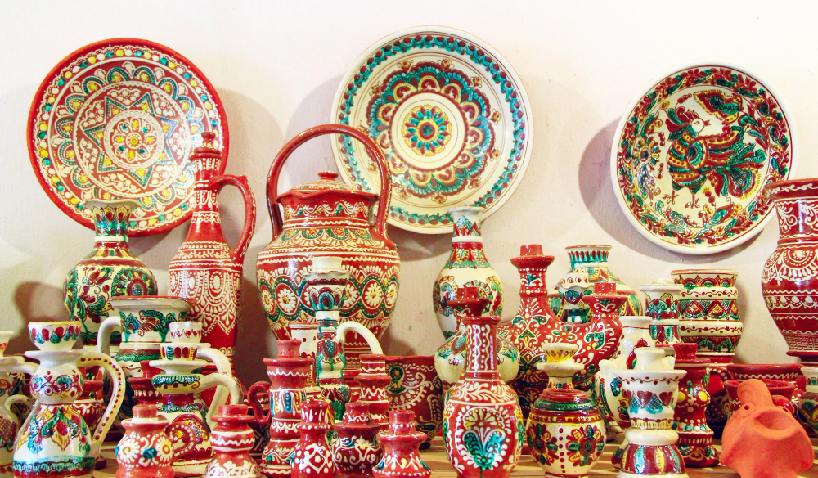Things about Kashmir Shawls
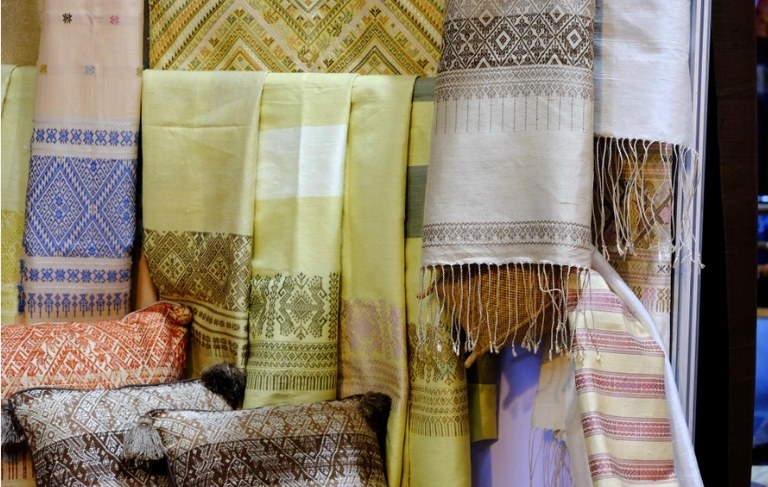
Nestled amidst the breathtaking landscapes of the Kashmir Valley lies a treasure trove of exquisite craftsmanship and cultural heritage – the Kashmir shawl. Revered for centuries for their unparalleled beauty and craftsmanship, Kashmir shawls have captivated the hearts of connoisseurs and collectors worldwide. In this comprehensive exploration, we embark on a journey to unravel the enigmatic beauty of Kashmir shawls, delving into their history, craftsmanship, symbolism, and enduring allure.
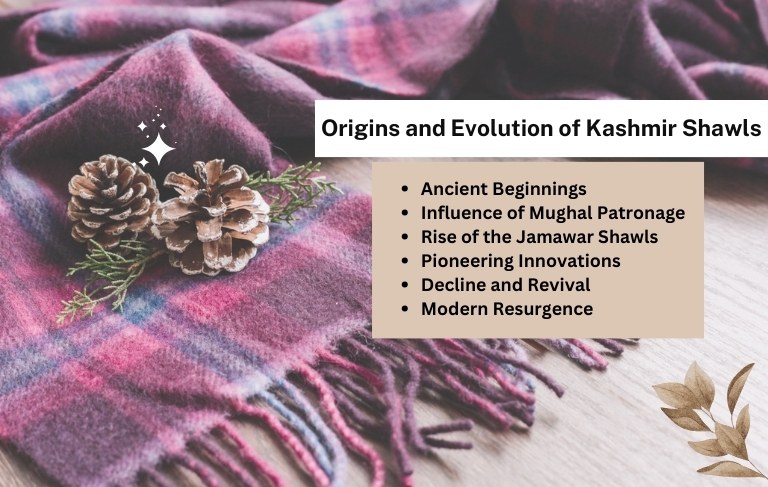
Origins and Evolution of Kashmir Shawls
The journey of Kashmir shawls is a testament to the rich cultural heritage and exquisite craftsmanship of the Kashmir Valley. From humble beginnings to global renown, the evolution of Kashmir shawls is a fascinating tale of tradition, innovation, and artistic ingenuity. In this exploration, we delve into the origins and evolution of Kashmir shawls, uncovering the secrets of their timeless allure.Ancient Beginnings:
The history of Kashmir shawls can be traced back over 500 years, to the reign of Sultan Zain-ul-Abidin, also known as Budshah. It was during his rule in the 15th century that the art of shawl weaving began to flourish in Kashmir. Under his patronage, Persian weavers were invited to the valley, bringing with them the expertise and techniques that would lay the foundation for Kashmir’s iconic shawl industry.Influence of Mughal Patronage:
The Mughal era marked a golden age for Kashmir shawls, with emperors such as Akbar and Jahangir expressing a keen appreciation for these luxurious textiles. Mughal emperors were known to commission elaborate shawls adorned with intricate embroideries, gold-thread work, and precious gemstones. The royal patronage provided a significant boost to the Kashmiri shawl industry, elevating its status and reputation.Rise of the Jamawar Shawls:
During the 18th century, Kashmir witnessed the emergence of a new type of shawl known as Jamawar. Named after the Persian term “jama,” meaning robe, and “war,” meaning yard, Jamawar shawls were distinguished by their elaborate patterns and intricate designs. These shawls were woven using a special weaving technique that allowed for the incorporation of intricate motifs such as paisleys, florals, and geometric patterns.Pioneering Innovations:
The 19th century witnessed significant innovations in Kashmir shawl production, including the introduction of the Jacquard loom. This mechanized loom revolutionized the weaving process, allowing for the creation of more intricate designs and patterns. Additionally, advancements in dyeing techniques and the use of imported raw materials such as Merino wool and Cashmere further enhanced the quality and appeal of Kashmir shawls.Decline and Revival:
The late 19th and early 20th centuries saw a decline in the Kashmir shawl industry due to various factors, including changing fashion trends, economic challenges, and competition from other textile centers. However, efforts to revive the industry began in the mid-20th century, with initiatives aimed at preserving traditional craftsmanship, training new artisans, and promoting Kashmiri shawls in domestic and international markets.Modern Resurgence:
Today, Kashmir shawls continue to enjoy global recognition and acclaim for their exquisite beauty and craftsmanship. While traditional handloom weaving techniques are still practiced by skilled artisans, modern innovations such as digital printing and sustainable sourcing are also shaping the future of the Kashmir shawl industry. With a renewed focus on preserving cultural heritage and promoting artisanal craftsmanship, Kashmir shawls are poised to continue captivating audiences around the world for generations to come.The Art of Shawl Making in Kashmir
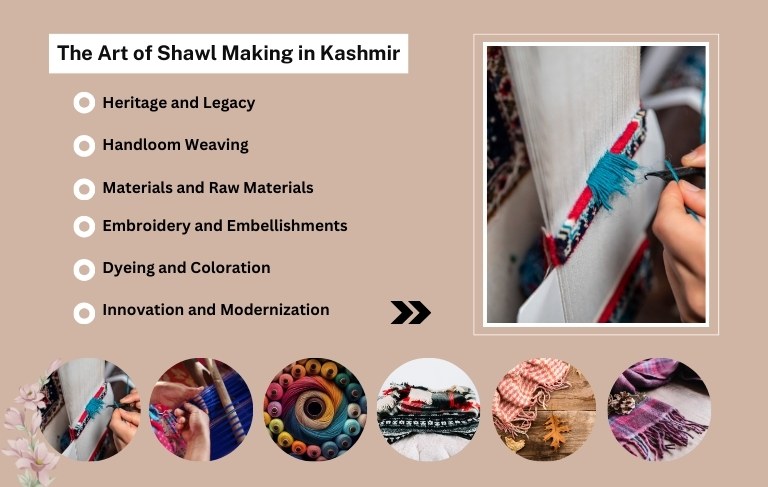
Nestled amidst the majestic peaks of the Himalayas, the Kashmir Valley is renowned for its rich tradition of shawl making. For centuries, skilled artisans have practiced the intricate art of weaving, embroidering, and embellishing shawls, transforming raw materials into exquisite works of wearable art. In this exploration, we unveil the secrets of the age-old craft of shawl making in Kashmir, delving into the techniques, materials, and traditions that define this revered art form.
Heritage and Legacy:
- Shawl making in Kashmir dates back over 500 years, with a legacy steeped in history and tradition.
- The craft has been passed down through generations, with families of artisans preserving age-old techniques and skills.
- Artisan communities in regions such as Srinagar, Pahalgam, and Gulmarg play a pivotal role in keeping the tradition alive.
Handloom Weaving:
- Traditional shawl making in Kashmir primarily involves handloom weaving, a labor-intensive process that requires skill and precision.
- Artisans use hand-operated looms to weave intricate patterns and designs into the fabric, often working for hours or even days to complete a single shawl.
- Handloom weaving allows for greater control over the weaving process, resulting in unique and bespoke creations.
Materials and Raw Materials:
- Kashmiri shawls are crafted from a variety of natural fibers, including wool, Pashmina, silk, and cotton.
- Pashmina, derived from the undercoat of the Himalayan mountain goat, is prized for its exceptional softness and warmth, making it the preferred choice for luxury shawls.
- Skilled artisans hand-spin the yarn using traditional spinning wheels before weaving it into the fabric, ensuring the highest quality and craftsmanship.
Embroidery and Embellishments:
- Embroidery is an integral part of Kashmiri shawl making, with artisans showcasing their expertise through intricate needlework and embellishments.
- Traditional Kashmiri embroidery techniques include Aari work, Sozni embroidery, and Tilla work, each characterized by its unique motifs and stitches.
- Embellishments such as sequins, beads, and zari (metallic thread) are often used to add texture and sparkle to the shawls, further enhancing their beauty and elegance.
Dyeing and Coloration:
- The process of dyeing is another crucial aspect of Kashmiri shawl making, with artisans using natural dyes derived from plants, minerals, and insects.
- Traditional colors such as crimson, indigo, and saffron are commonly used, each imbuing the fabric with rich and vibrant hues.
- Artisans employ techniques such as tie-dyeing, block printing, and resist dyeing to create intricate patterns and designs on the fabric.
Innovation and Modernization:
- While traditional techniques remain at the heart of Kashmiri shawl making, modern innovations and technologies are also shaping the industry.
- Digital printing techniques allow for the reproduction of intricate designs and patterns with greater precision and efficiency.
- Sustainable practices such as eco-friendly dyeing methods and ethical sourcing of raw materials are gaining traction, reflecting a growing awareness of environmental and social issues.
Exploring the Diversity: Types and Varieties of Kashmiri Shawls
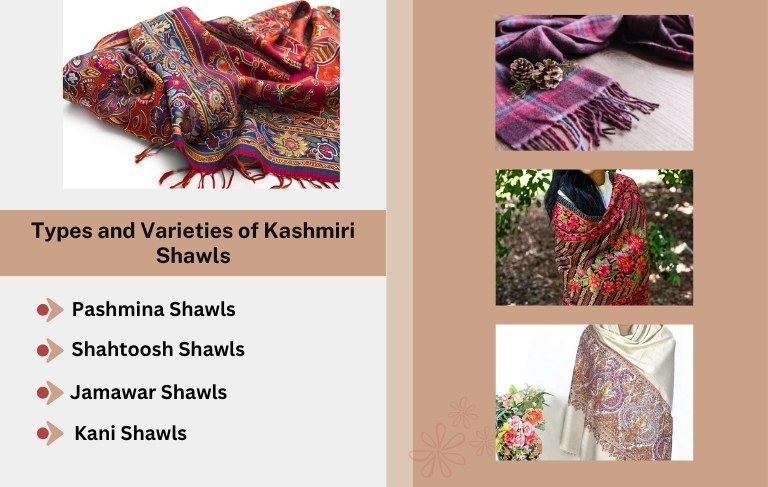
Kashmiri shawls are renowned worldwide for their exquisite craftsmanship, luxurious materials, and timeless elegance. From the softness of Pashmina to the intricate designs of Jamawar, Kashmiri shawls come in a variety of types and varieties, each with its own unique characteristics and appeal. In this exploration, we delve into the diverse world of Kashmiri shawls, uncovering the nuances of their fabrics, weaving techniques, and cultural significance.
Pashmina Shawls:
Pashmina shawls are considered the epitome of luxury and sophistication, crafted from the fine undercoat of the Himalayan mountain goat known as the Pashmina goat. Known for their unparalleled softness, warmth, and lightweight feel, Pashmina shawls are prized for their exquisite quality and timeless appeal. Kashmiri artisans meticulously hand-spin and weave the delicate Pashmina fibers into fabrics that exude elegance and refinement, making them coveted treasures for discerning collectors and fashion enthusiasts.Shahtoosh Shawls:
Shahtoosh shawls are among the rarest and most prized varieties of Kashmiri shawls, crafted from the ultra-fine undercoat of the Tibetan antelope, known as the chiru. These shawls are revered for their incredible softness, lightweight feel, and exceptional warmth, making them ideal for cold climates. However, due to conservation concerns and international regulations, the production and sale of Shahtoosh shawls are highly restricted, adding to their allure and exclusivity.Jamawar Shawls:
Jamawar shawls are characterized by their elaborate designs, intricate patterns, and rich colors, created using a traditional weaving technique known as “Jamawar.” Originating in Persia and later adopted by Kashmiri artisans, Jamawar shawls feature intricate motifs such as paisleys, florals, and geometric patterns, woven using a combination of Silk and Wool threads. These shawls are prized for their ornate beauty, cultural significance, and meticulous craftsmanship, making them popular choices for special occasions and formal events.Kani Shawls:
Kani shawls are renowned for their intricate Kani weaving technique, which involves using small wooden bobbins called “kanis” to create elaborate patterns and designs. Each Kani shawl is painstakingly hand-woven on traditional wooden looms, with skilled artisans working for months to complete a single shawl. These shawls often feature traditional Kashmiri motifs such as paisleys, flowers, and chinar leaves, creating a tapestry of colors and textures that is both timeless and exquisite.Collecting and Care for Kashmiri Shawls
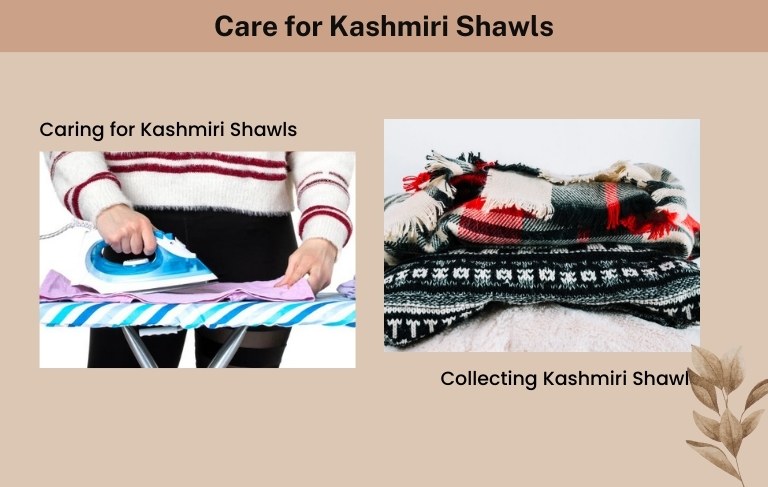
Kashmiri shawls, with their exquisite beauty and timeless elegance, are not just garments but cherished works of art passed down through generations. Whether acquired as heirlooms, gifts, or personal indulgences, Kashmiri shawls require special care to preserve their delicate fabrics, intricate embroideries, and vibrant colors. In this guide, we explore the art of collecting and caring for Kashmiri shawls, offering tips and techniques to ensure these treasures remain pristine for years to come.
Collecting Kashmiri Shawls:
- Building a Collection: Start by identifying your preferences, whether it’s Pashmina, Jamawar, or Shahtoosh, and gradually expand your collection over time.
- Authenticity Matters: Purchase shawls from reputable sources and verify their authenticity through certifications, labels, or expert opinions.
- Diverse Selection: Explore different types and varieties of Kashmiri shawls, including vintage pieces, contemporary designs, and limited editions, to create a diverse and eclectic collection.
- Preservation: Store shawls in a cool, dry place away from direct sunlight and moisture to prevent damage from humidity, pests, and fading.
Caring for Kashmiri Shawls:
- Gentle Cleaning: Avoid frequent washing and opt for spot cleaning with a mild detergent or baby shampoo to remove stains or dirt.
- Handwashing: If necessary, handwash shawls in lukewarm water with a gentle detergent, taking care not to wring or twist the fabric.
- Drying: Lay shawls flat on a clean towel to air dry, avoiding direct sunlight or heat sources that can cause shrinking or damage.
- Ironing: Use a low-heat iron or steamer to remove wrinkles, placing a thin cotton cloth between the iron and the shawl to prevent direct contact.
- Storage: Fold shawls neatly and store them in breathable cotton or linen bags to protect them from dust, moths, and odors.
- Rotation: Rotate shawls in your collection regularly to prevent creasing and uneven wear, especially for pieces displayed or stored for extended periods.
Special Care for Different Fabrics:
- Pashmina Shawls: Handle with care due to their delicate fibers, avoiding friction, excessive stretching, or exposure to chemicals.
- Shahtoosh Shawls: Adhere to legal regulations and ethical considerations when acquiring and caring for Shahtoosh shawls, as they are made from endangered species.
- Jamawar Shawls: Protect the intricate embroidery and embellishments by avoiding rough handling or abrasive surfaces.
